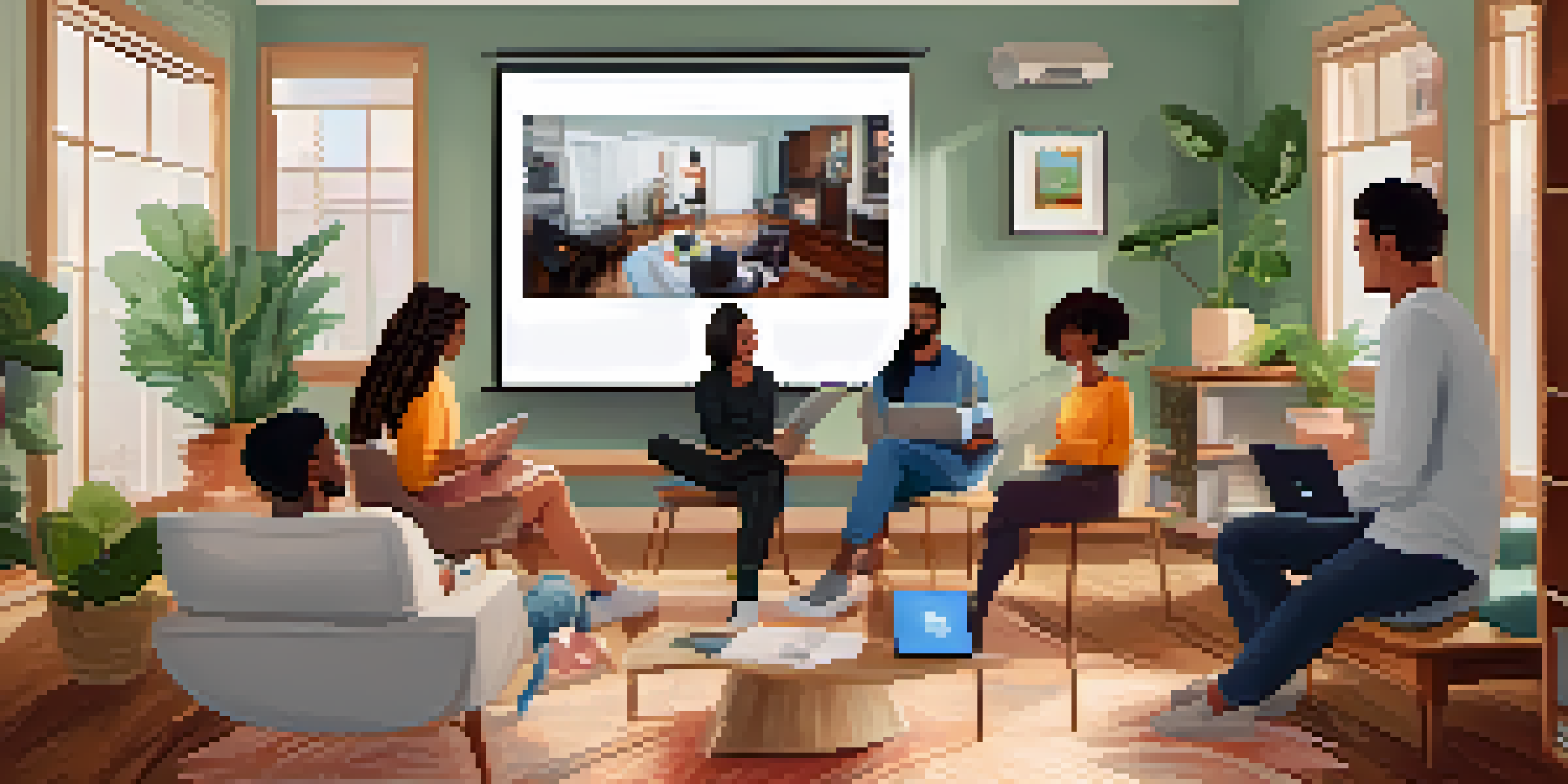Telepsychology: Bridging the Gap in Mental Health Services

Understanding Telepsychology and Its Importance
Telepsychology, a branch of telehealth, involves providing mental health services via digital platforms. This approach has gained traction due to its ability to reach individuals who may otherwise struggle to access traditional therapy. Imagine being able to sit in your favorite chair at home while receiving professional support—this is the comfort telepsychology offers.
The greatest weapon against stress is our ability to choose one thought over another.
Its significance has become particularly evident during crises, such as the COVID-19 pandemic, when in-person visits were limited. Many people turned to online therapy as a lifeline, discovering that they could engage with mental health professionals from the safety of their homes. This flexibility has opened doors for countless individuals who may have felt isolated or unsupported.
Moreover, telepsychology is crucial for those in remote or underserved areas where mental health resources are scarce. By leveraging technology, we can bridge the geographical gap, ensuring that everyone has the opportunity to seek help and guidance. It's a significant step toward making mental health care more equitable and accessible.
The Benefits of Telepsychology for Patients
One of the most notable benefits of telepsychology is convenience. Patients can schedule appointments that fit their busy lives without the stress of commute times or waiting rooms. This ease of access encourages more people to seek therapy, ultimately leading to better mental health outcomes.

Additionally, telepsychology can help reduce the stigma often associated with seeking help. The anonymity of connecting from home can make it easier for individuals to take that crucial first step in addressing their mental health needs. It’s like having a supportive friend by your side, even if they’re miles away.
Telepsychology Enhances Access
Telepsychology breaks geographical barriers, making mental health services more accessible, especially for those in remote areas.
Telepsychology also allows for a broader selection of therapists, enabling patients to find a professional who aligns with their specific needs and preferences. This variety can foster a stronger therapeutic alliance, ultimately enhancing the effectiveness of the treatment process.
Overcoming Challenges in Telepsychology
While telepsychology offers many advantages, it’s not without challenges. Technical difficulties, such as poor internet connections, can disrupt sessions and lead to frustration. It’s essential for both therapists and patients to have a reliable setup to ensure smooth communication and effective sessions.
In the middle of difficulty lies opportunity.
Moreover, some individuals may struggle with the technology itself, particularly older adults who may not be as familiar with digital platforms. Providing clear instructions and tech support can help ease these concerns, making it easier for everyone to engage fully in their therapy sessions.
Another challenge lies in maintaining confidentiality and privacy during remote sessions. Both therapists and patients must be aware of best practices for securing their conversations, ensuring that sensitive information remains protected. This is crucial for building trust and fostering a safe therapeutic environment.
Telepsychology and Its Role in Crisis Situations
Telepsychology plays a vital role during crisis situations, such as natural disasters or public health emergencies. When traditional mental health services may be disrupted, online therapy provides an immediate resource for those in need. It’s like having a mental health lifeline during turbulent times.
For example, during the pandemic, many people experienced heightened anxiety and stress due to isolation and uncertainty. Telepsychology offered a crucial outlet for individuals to express their feelings and receive support, helping them navigate these unprecedented challenges. This adaptability is a key strength of telepsychology.
Convenience Reduces Stigma
The convenience of telepsychology encourages individuals to seek help, helping to diminish the stigma around mental health treatment.
Furthermore, telepsychology can facilitate rapid response for communities affected by trauma. Mental health professionals can connect with those in need quickly, providing essential care to help individuals cope and heal. This immediacy can be transformative for those facing emotional turmoil.
The Future of Telepsychology in Mental Health Care
As technology continues to evolve, the future of telepsychology looks promising. Innovations such as artificial intelligence and virtual reality could enhance therapeutic techniques, making sessions even more engaging and effective. It’s an exciting time for both therapists and patients as we explore new possibilities.
Moreover, as more people become accustomed to online interactions, the stigma surrounding teletherapy is likely to diminish further. This acceptance can lead to increased participation in mental health services, ultimately benefiting society as a whole. Imagine a world where seeking help is as normal as a trip to the grocery store.
Lastly, ongoing research is essential to understand the long-term effectiveness of telepsychology. As we gather data on patient outcomes and experiences, we can refine practices and ensure that telepsychology remains a valuable resource in mental health care. The journey is just beginning, and the potential is vast.
Tips for Patients Engaging in Telepsychology
To get the most out of telepsychology, patients should create a comfortable and private space for their sessions. Finding a quiet, distraction-free environment can enhance focus and allow for open dialogue. Think of it as setting the stage for a meaningful conversation.
Additionally, being prepared for each session can improve the overall experience. Patients can jot down thoughts, feelings, or questions they want to discuss, ensuring that they make the most of their time with their therapist. This proactive approach can lead to deeper insights and more productive discussions.
Challenges Must Be Addressed
Despite its benefits, telepsychology faces challenges like technical issues and privacy concerns that need to be addressed for effective care.
Lastly, patients should communicate openly with their therapists about any challenges they face during remote sessions. Whether it’s technical issues or feelings of disconnection, sharing these experiences can foster a collaborative approach to overcoming obstacles together.
Conclusion: Embracing Telepsychology for Better Mental Health
In conclusion, telepsychology has emerged as a powerful tool in bridging the gap in mental health services. By offering accessible, convenient, and effective care, it holds the potential to transform how we approach mental well-being. It’s a welcome shift toward a more inclusive and supportive environment for all.
As we continue to embrace telepsychology, we must remain mindful of its challenges and work collaboratively to address them. By leveraging technology responsibly and compassionately, we can enhance mental health care for everyone. It’s about making sure no one feels alone in their journey.

Ultimately, the goal is to foster a culture where seeking help is not only accepted but encouraged. Telepsychology is a significant step in that direction, providing a lifeline to those who need it most. Together, we can create a healthier future for our communities.